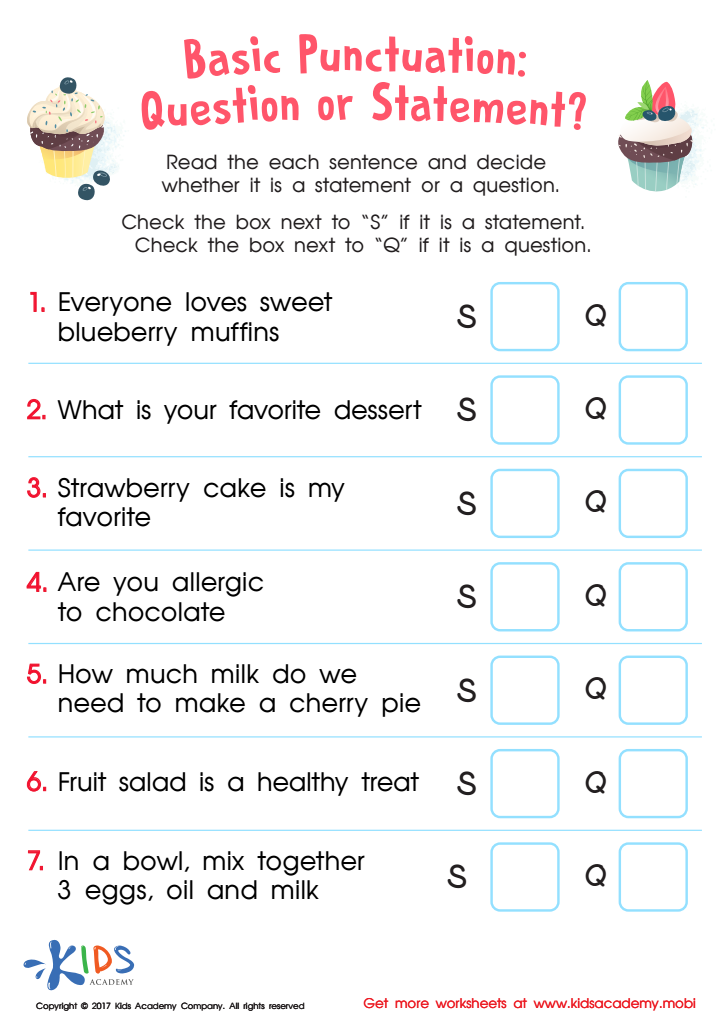Understanding sentences Worksheets for Kids
1 filtered results
-
From - To


Basic Punctuation: Question or Statement Printable
Question/Answer
What does the Understanding sentences skill mean when it comes to Grade 1 Punctuation learning?
The Understanding sentences skill in Grade 1 Punctuation learning involves recognizing and grasping the basic structure of sentences. This includes identifying the beginning and end of sentences and understanding fundamental punctuation marks like periods, question marks, and exclamation points, which signify sentence boundaries and express different types of sentences: statements, questions, and exclamations.
How to train the Understanding sentences skill in Grade 1 students learning about Punctuation?
Introduce Grade 1 students to basic punctuation marks like periods, question marks, and exclamation points through engaging activities. Use visual aids, such as storyboards with missing punctuation, and have students practice adding the correct marks. Encourage reading aloud to emphasize the role of punctuation in sentence meaning and intonation. Incorporate games and worksheets for enjoyable practice.
How does the mastery of the Understanding sentences skill affect a student's performance at an early age?
Mastery of the Understanding sentences skill at an early age significantly enhances a student's reading comprehension, critical thinking, and overall communication abilities. It lays a foundational base for academic success by facilitating easier acquisition of new knowledge, improving engagement with learning materials, and boosting confidence in both written and oral communication.
 Assign to the classroom
Assign to the classroom












